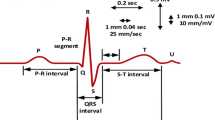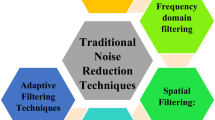Biological signals such as magnetic resonance spectroscopy signals are susceptible to noise and artifacts. The information obtained from these signals is significant in analyzing human physiological conditions. MRS, a nonionizing and noninvasive method, presents an effective alternative method to biopsy for diagnosis and analysis from generated signals that are rich in chemical information of the tissues in the region of interest. A persisting problem of this method is the presence of noise and artifacts causing misinterpretation and subsequent incorrect diagnosis. The present research proposes a denoising strategy using the rational-dilation wavelet transform-based signal decomposition and a thresholding criterion designed using the Lpq-norm-based sparsity measure of the decomposition levels of the signal. Compared with the standard state-of-the-art methods, which are effective in denoising but can cause distortion of the signal at discontinuities, the proposed method can remove artifacts such as spurious echoes present in the magnetic resonance signals and improve the signal-to-noise ratio without distorting the signal.
Similar content being viewed by others
References
C. E. Mountford, P. Stanwell, A. Lin, S. Ramadan, and B. Ross, Chem. Rev., 110, No. 5, 3060–3086 (2010), https://doi.org/10.1021/cr900250y.
A. Lin, T. Tran, S. Bluml, S. Merugumala, H.-J. Liao, and B. Ross, Sem. Neurol., 32, No. 4, 432–453 (2013), https://doi.org/10.1055/s-0032-1331814.
S. P. Kyathanahally, A. Döring, and R. Kreis, Mag. Res. Med., 80, No. 3, 851–863 (2018), https://doi.org/10.1002/mrm.27096.
I. Daubechies, Ten Lectures on Wavelets, Philadelphia, Pa: Society for Industrial and Applied Mathematics (1992).
S. G. Mallat, IEEE Trans. Acoust., Speech, Signal Proc., 37, No. 12, 2091–2110 (1989), https://doi.org/10.1109/29.45554.
F. Ehrentreich, Anal. Bioanal. Chem., 372, No. 1, 115–121 (2002), https://doi.org/10.1007/s00216-001-1119-4.
J. Karvanen and A. Cichocki, Measuring Sparseness of Noisy Signals, 4th Intю Symposium Independent Component Analysis and Blind Signal Separation, pp. 125–130 (2003).
I. Bayram and I. W. Selesnick, IEEE Trans. Signal Process, 57, No. 8, 2957–2972 (2009), https://doi.org/10.1109/TSP.2009.2020756.
C. Ding, D. Zhou, X. He, and H. Zha, Proc. Int. Conf. Machine Learning – ICML'06, Pittsburgh, Pennsylvania, pp. 281–288 (2006), https://doi.org/10.1145/1143844.1143880.
M. Khosravy, N. Nitta, N. Gupta, N. Patel, and N. Babaguchi, Compressive Sensing in Healthcare, Elsevier, pp. 43–63 (2020).
W. Wu et al., J. Chem. Inf. Model., 46, No. 2, 863–875 (2006), https://doi.org/10.1021/ci050316w.
G. F. Giskeødegård et al., Anal. Chim. Acta, 683, No. 1, 1–11 (2010), https://doi.org/10.1016/j.aca.2010.09.026.
L. Chen, Z. Weng, L. Goh, and M. Garland, J. Mag. Res., 158, Nos. 1–2, 164–168 (2002), https://doi.org/10.1016/S1090-7807(02)00069-1.
F. Jiru, Europ. J. Radiology, 67, No. 2, 202–217 (2008), https://doi.org/10.1016/j.ejrad.2008.03.005.
U. Klose, Mag. Res. Med., 14, No. 1, 26–30 (1990), https://doi.org/10.1002/mrm.1910140104.
W. W. F. Pijnappel, A. van den Boogaart, R. de Beer, and D. van Ormondt, J. Mag. Res., 97, No. 1, 122–134 (1992), https://doi.org/10.1016/0022-2364(92)90241-X.
T. Laudadio, N. Mastronardi, L. Vanhamme, P. Van Hecke, and S. Van Huffel, J. Mag. Res., 157, No. 2, 292–297 (2002), https://doi.org/10.1006/jmre.2002.2593.
D. Stefan et al., Meas. Sci. Technol., 20, No. 10, Article ID 104035 (2009), https://doi.org/10.1088/0957-0233/20/10/104035.
D. L. Donoho, IEEE Trans. Inform. Theory, 41, No. 3, 613–627 (1995), https://doi.org/10.1109/18.382009.
I. M. Johnstone and B. W. Silverman, J. Roy. Statist. Soc. Ser. B (Methodological), 59, No. 2, 319–351 (1997).
D. L. Donoho and I. M. Johnstone, Biometrika, 81, 425–455 (1994), https://doi.org/10.1093/biomet/81.3.425.
Jun Jiang, Jian Guo, Weihua Fan, and Qingwei Chen, Proc. 8th World Congress on Intelligent Control and Automation, Jinan, China, Jul. 2010, 2894–2898 (2010), https://doi.org/10.1109/WCICA.2010.5554856.
G. Y. Chen and T. D. Bui, IEEE Signal Proc. Lett., 10, No. 7, 211–214 (2003), https://doi.org/10.1109/LSP.2003.811586.
R. Hussein, K. B. Shaban, and A. H. El-Hag, Int. Conf. Communications, Signal Processing, and their Applications (ICCSPA'15), Sharjah, United Arab Emirates, pp. 1–5 (2015), https://doi.org/10.1109/ICCSPA.2015.7081289.
C. Huimin, Z. Ruimei, and H. Yanli, Phys. Proc., 33, 1354–1359 (2012), https://doi.org/10.1016/j.phpro.2012.05.222.
Y. Ding and I. W. Selesnick, IEEE Signal Proc. Lett., 22, No. 9, 1364–1368 (2015), https://doi.org/10.1109/LSP.2015.2406314.
G. Chen, W. Xie, and Y. Zhao, Fourth Int. Conf. Intelligent Control and Inform. Proc. (ICICIP), Beijing, China, Jun. 2013, pp. 570–574 (2013), https://doi.org/10.1109/ICICIP.2013.6568140.
L. Sendur and I. W. Selesnick, IEEE Trans. Signal Proc., 50, No. 11, 2744–2756 (2002), https://doi.org/10.1109/TSP.2002.804091.
Y. Liu and X. Cheng, Fourth Int. Conf. Fuzzy Systems and Knowledge Discovery (FSKD 2007), Haikou, China, pp. 32–35 (2007), https://doi.org/10.1109/FSKD.2007.90.
I. K. Fodor, J. Electron. Imaging, 12, No. 1, 151 (2003), https://doi.org/10.1117/1.1525793.
C. He, J. Xing, J. Li, Q. Yang, and R. Wang, Math. Prob. Eng., 2015, 1–9 (2015), https://doi.org/10.1155/2015/280251.
T. Hui, C. Lin, L. Zengli, and C. Zaiyu, Wavelet Image Denoising Based on the New Threshold Function, 4 (2013).
S. Jangjit and M. Ketcham, Engineering. J., 21, No. 7, 141–155 (2017), https://doi.org/10.4186/ej.2017.21.7.141.
L. Jing-yi, L. Hong, Y. Dong, and Z. Yan-sheng, Math. Prob. Eng., 2016, 1–8 (2016), https://doi.org/10.1155/2016/3195492.
S. A. A. Karim, M. T. Ismail, M. K. Hasan, J. Sulaiman, and H. Sakidin, Denoising Using New Thresholding Method, Johor Bahru, Malaysia, Article ID 0300342 (2016), https://doi.org/10.1063/1.4954570.
S. G. Chang, Bin Yu, and M. Vetterli, IEEE Trans. Image Process., 9, No. 9, 1532–1546 (2000), https://doi.org/10.1109/83.862633.
M. Srivastava, C. L. Anderson, and J. H. Freed, IEEE Access, 4, 3862–3877 (2016), https://doi.org/10.1109/ACCESS.2016.2587581.
Z. Wang, A. C. Bovik, H. R. Sheikh, and E. P. Simoncelli, IEEE Trans. Image Process., 13, No. 4, 600–612 (2004), https://doi.org/10.1109/TIP.2003.819861.
I. W. Selesnick, IEEE Trans. Signal Process., 52, No. 5, 1304–1314 (2004), https://doi.org/10.1109/TSP.2004.826174.
T. S. Sharan, S. Sharma, and N. Sharma, J Appl. Spectr., 88, 117–124 (2021), https://doi.org/10.1007/s10812-021-01149-9.
Author information
Authors and Affiliations
Corresponding author
Additional information
Abstract of article is published in Zhurnal Prikladnoi Spektroskopii, Vol. 89, No. 3, p. 430, May–June, 2022.
Rights and permissions
Springer Nature or its licensor holds exclusive rights to this article under a publishing agreement with the author(s) or other rightsholder(s); author self-archiving of the accepted manuscript version of this article is solely governed by the terms of such publishing agreement and applicable law.
About this article
Cite this article
Sagar, C., Singh, D.K. & Sharma, N. Sparsity-Based Thresholding Criterion for Spurious Echo Removal and Denoising Magnetic Resonance Spectra Using Rational-Dilation Wavelet Transform. J Appl Spectrosc 89, 542–551 (2022). https://doi.org/10.1007/s10812-022-01393-7
Published:
Issue Date:
DOI: https://doi.org/10.1007/s10812-022-01393-7




